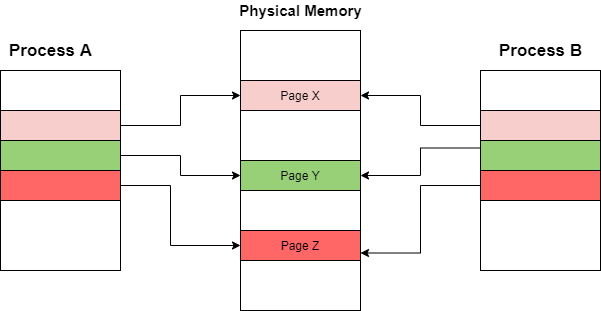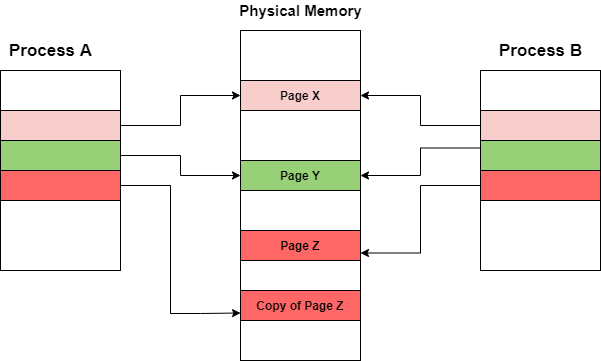COW File System and Journaling
1. Copy-on-Write (CoW) File Systems
- Definition: CoW is a resource management technique allowing parent and child processes to share the same memory pages initially. Only when a modification occurs, a copy of the page is made.
- Usage: Efficiently copies data resources. If the copied data is unmodified, it remains as a reference to the original.
- Implementation: Commonly used in the
fork() system call, creating a child process that shares the parent's memory pages.
- Operating Systems: Utilized by Linux, Solaris, Windows XP.
- Advantages: Only modified pages are copied, reducing overhead. Free pages are allocated from a pool of zeroed-out pages.
2. CoW Technique Details
- Process Creation: Parent and child processes share memory pages marked as copy-on-write. Modifications trigger the creation of a new page copy.

- Example: Process A and Process B share the same memory pages. If Process A modifies a page, a copy of that page is created for Process A.

3. Journaling File Systems
- Purpose: Addresses file system inconsistency by logging actions before committing them to the disk.
- Examples: Linux ext3/ext4, Windows NTFS.

- Components of a Journal:
- TxB (Transaction Begin Block): Contains transaction ID (TID).
- Metadata Blocks: Copies of blocks to be updated.
- TxE (Transaction End Block): Marks the end of a transaction.
- Process:

- Write actions to the journal.
- Commit the transaction by writing TxE.
- Write data to the disk (checkpoint).
4. Benefits of Journaling
- Improved Recovery Time: Quick recovery after crashes by referring to the journal.
- Enhanced Data Integrity: Ensures updates are complete and recoverable.
- Reduced Disk Scans: Minimizes the need for full disk scans to fix inconsistencies.
5. Types of Journaling File Systems
- Physical Journaling: Records an advance copy of every block to be written, offering high fault protection but with a performance penalty.
- Logical Journaling: Stores changes to metadata, offering better performance but less fault tolerance.
6. Alternatives to Journaling
- Log-Structured File Systems: Occupy the entire storage device, avoiding the write-twice penalty.
- Copy-on-Write File Systems: Full CoW systems like ZFS and Btrfs avoid in-place changes by writing new data blocks and updating metadata.
- Soft Updates: Used in some Unix file systems to maintain consistency without journaling by ordering writes to prevent inconsistency.



